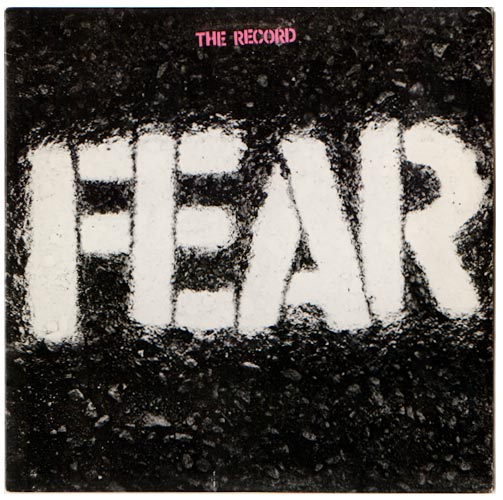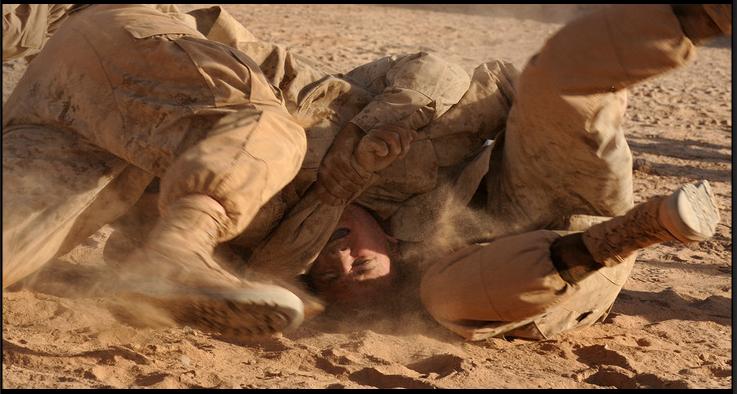Today, I will talk about some upper body strikes that will give you enough time to either strike back or escape the danger zone unharmed. Before talking about them, I will talk about safety tips about fighting for your life.
- If someone is attacking you, you are right and the other person is wrong. Their motivation is probably wanting your money or possessions or body, while yours is self-preservation. You have a basic human right to defend yourself and your loved ones. The first means of self defense is escape. In a court of law, if it should get to that point, you can justify your actions through "acting in self defense" only if you took every available opportunity to avoid the fight and every opportunity to escape. If it is clear that you had an opportunity to leave the area safely, but you did not, then it is no longer a case of self-defense, it is now disorderly conduct and assault. You are responsible for taking appropriate action. Being attacked is no cause for killing or maiming when you could have reasonably done less to defend yourself.
- In a self-defense situation, take a "not me" attitude: don't let yourself be the their next target. This starts before the fight, since experienced criminals will choose their victims not by what they are wearing or who they are, but how they act. If you are confident, you will not be the one they target.
- Learn to control both fear and adrenaline as these are some of the most likely causes of mistakes in the beginning of a combat situation. When someone jumps you, you will not only be afraid, but you will be pumped with adrenaline. For those who have a certain phobia, they freeze up. Adrenaline mixed with fear will cause your muscles to lock and all of your knowledge, experience, and motivation will be lost.
- Talk with people who had experience defending themselves about how one would defend one's self in a dangerous situation.
- If you think that you may be entering any place where an attack could possibly happen, keep some pepper spray with you. This could be an invaluable lifesaver. Never keep a potentially lethal weapon such as a firearm or a knife with you as you may turn a mugging into a fight to the death, especially if the assailant is armed.
- Threatening an assailant with a weapon is a bad idea unless you fear for your life. It is not worth going to jail for murder or getting killed because of something replaceable. Remember, the assailant is most probably stronger and more experienced in fighting than you or he would not have chosen you.
- If this is any sort of domestic situation, you may be wondering at what point it becomes bad enough to warrant you defending yourself. By legal standards, any unwarranted contact is an assault. It doesn't matter if the person pushed you, it is still an assault, can still be dangerous, and you still deserve to defend yourself.
- Stay cool. Do not panic if someone is acting hostile. That will make the attacker suspect you are weak.
- Do not under any circumstances act tough. Doing this will only anger your opponent or make him think that he has to act tough and the only way he can act tougher is to beat you unconscious.
- Last but not the least, try to run away before coming in contact with a fight.
1. The Eye Gouge
Eye-gouging is the act of pressing or tearing the eye using the fingers, other bodyparts, or instruments. Eye-gouging involves a very high risk of eye injury, such as permanent eye loss. Training in eye-gouging can involve extensive grappling training to establish control, the eye-gouging itself being practiced with the opponent wearing eye protection.
2. The Hammer Fist
A strike with the bottom of a clenched fist, using an action like swinging a hammer, but can also be used horizontally like a backfist strike using the bottom fist.
This strike will not damage the bones of the hands as there is no compression of the knuckles or metacarpals, and there is no leverage to bend the wrist.
3. The Elbow Strike
An elbow strike is a strike with the point of the elbow, the part of the forearm nearest to the elbow, or the part of the upper arm nearest to the elbow. Elbows can be thrown sideways similarly to a hook, upwards similarly to an uppercut, or downwards with the point of the elbow.










